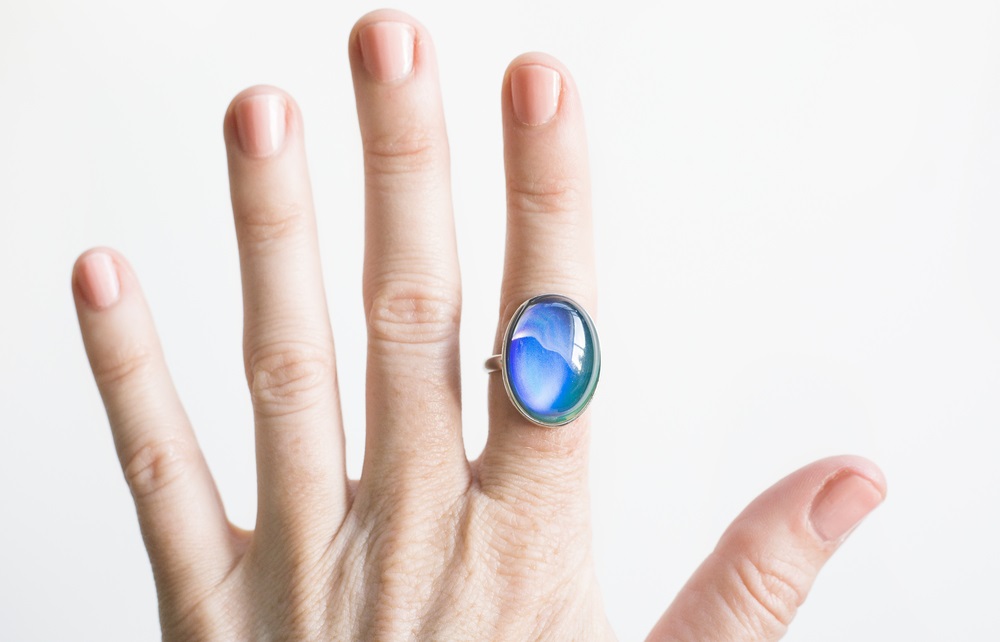
The stone of a mood ring is made of thermochromic dyes. These have the property to change color when temperature changes. For example, when the temperature rises, it changes from black to green. Mood rings, therefore, do not really reflect the feelings of the wearer. Behind the alleged mystery, it hides only a chemical trick from the field of thermochromism.
How Do Mood Rings Work?
It is seemingly magical – it changes its colors from black to dark blue to green. The fact that the stone of your extraordinary piece of jewelery can change its colors is due to its special material properties. The thermochromic colors contained in it react to temperature changes with a color change.
Even if your mood ring does not really reflect your emotional state, it still creates a timeless and extraordinary eye-catcher on your finger.
Mood rings exert a special charm on your wearer and lover. A popular belief is that the particular color of the stone reflects the mood of its wearer. While the color green, for example, should stand for a frightened mood, the color purple expresses a rather casual to cool mood.
However, it is not as magical as you would like it to be with these jewelery rings. It is because the color changes can be scientifically explained. The stone itself or its surface is made of thermochromic colors. These have the ability to respond to temperature changes. As the ambient temperature changes, the stone changes color. That is reversible process.
If you wear your mood ring on your finger, it will react to your skin temperature. You will notice that your ring – worn on the finger usually takes the color green. Since the average skin temperature is 28 degrees Celsius, your stone will respond to that level and turn green.
On the other hand, if you take off your mood ring, it usually takes on the color black. Normally the room temperature is below the above mentioned 28 ° Celsius. If a higher ambient temperature prevails – for example due to direct sunlight, your mood ring changes its color.
Thermochromic – color changing dyes
But how do you imagine these thermochromic colors – or more precisely their structure and reaction mode? Thermochromic inks consist of liquid crystals that change their molecular structure as a result of temperature fluctuations.
For a mood ring to assume a thermochromic behaviour to perform color changes, either the stone itself or its surface, it must be equipped with thermotropic (thermochromic) liquid crystals. These are extremely temperature-sensitive and change their molecular structure in the event of temperature fluctuations. The different molecular structures are responsible for mood ring can chnages on different colors.
The respective changes in the molecular structure cause a different absorption and reflection of the visible light. This fact is expressed in the obvious color change of the stone. If, for example, the ambient temperature increases, the thermochromic liquid crystals change their position – they twist. The torsion due to a rise in temperature causes them to increasingly absorb (absorb) the green and red wavelengths of light. Then, it reflects the blue component. As a result, your mood ring presents itself in the color of dark blue.
As the temperature increases further, the thermochromic liquid crystals continue to rotate in the same direction, absorbing and reflecting differently the respective wavelengths of light.
On the other hand, if the ambient temperature reduces again, the liquid crystals turn back in the opposite direction and assume their original molecular structure; it naturally absorbs and reflects another spectrum of light.
Note: Only when your skin surface temperature deviates from the normal average temperature (28 ° C) does your mood ring change to another color instead of green.
